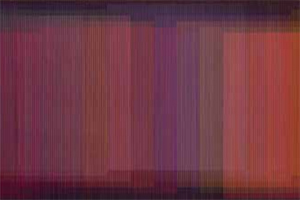
Carlos Cruz-Diez, Physichromie No. 500, 1970. Casein paint on PVC and acrylic on plywood sheets, 183 x 484 x 8 cm. Colección Patricia Phelps de Cisneros. © ADAGP, Paris and DACS, London 2014;
Radical Geometry the new exhibition at the Royal Academy of Arts curated by two Essex alumni Adrian Locke and Gabriel Pérez-Barreiro is getting rave reviews.
As part of this weekend's launch events Director of ESCALA (Essex Collection of Art from Latin America) Dr Jo Harwood is in conversation with legendary Venezuelan artist Carlos Cruz-Diez.
The show which opens to the public on Saturday 5 July explores the art produced during a fifty-year period in four distinct areas of South America in artistic hot spots in Argentina, Brazil, Uruguay and Venezula.
From radical innovations in the use of colour and form to new materials like neon and interactive, kinetic sculpture, the exhibition reveals some of the most original art of the last 100 years.
The Daily Telegraph said: “The Radical Geometry exhibition of abstract South American work utterly transforms our understanding of 20th-century art.”
Writing in the The Guardian reviewer Paul Laity described the exhibition as “excellent” and “eye opening” packed full of “visual revelations”. He added: “Most people, if asked about Latin American art, think of the Mexican muralists and Frida Kahlo's self-portraits; this show offers a rich alternative.”
Adrian is Exhibtions Curator at the Royal Academy, he completed a BA Latin American Studies, MA Latin American Art and PhD Art History at Essex.
Gabriel completed his PhD Art History at Essex and was the first curator of ESCALA based at the University. He is now Director and Curator at Colección Patricia Phelps de Cisneros from which the exhibition is drawn.
On Friday, ESCALA Director Dr Harwood will be in conversation at the Royal Academy with Maestro Carlos Cruz-Diez, a key figure in the Op Art and Kinetic art movements, as part of the programme of related events to mark the opening of the new show.
ESCALA has close links with the artist who donated one of his works and an edition of prints to the Collection in 1996. In 2004, he was invited to mount a two-part exhibition at the University Gallery and firstsite in Colchester as part of the University's 40th anniversary celebrations.